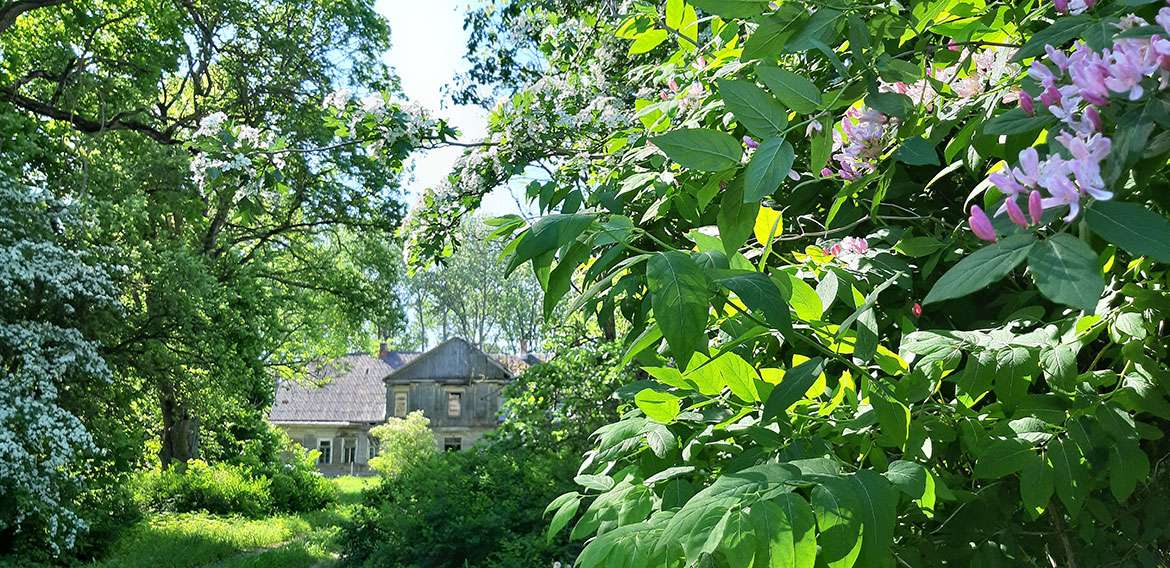About manor
At present Ālave's manor territory, a cultural and historical monument, has undeservedly been forgotten and the manor house has been granted a status of "ruin".
Ālave manor house is now a listed architectural monument with a protected status number of 4955. Built in the later part of the 19th century, comprising a single storey wooden structure with mezzanine and a perpendicular extension towards the courtyard. The manor house is a rare example of such a wooden structure in Zemgale. According to Zemgale's regional branch of the National Cultural Heritage Board only 14 similar wooden manor houses survive in Zemgale and most are in an unsatisfactory condition. 7 of the mentioned buildings are listed as monuments.
A little bit about the history of the manor:
"Historically Ālave's estate was possibly called Laukmuiža because the German name was “Feldhof”. In the beginning Ālave estate was part of the Vecapgulde (Alt-Abgulden) estate and can be traced back to 4th March 1670 when Heinrich von Lieven sold the property to Georg von Offenberg but then later regained it.
The next 50 years are a little cloudy. It is documented that on June 26, 1720, Otto Wilhelm von Hannebohm confirmed Ālave ownership to his daughter Maria Anna, upon marriage becoming von Lieven. But soon the estate was once again added back to Vecapgulde.
Reinhold Gotfrid von Hannebohm manage to separate Ālave and Bite estates from Vecapgulde, but 24 June 1734 both estates were sold for 7500 Albert dālders to the owner of Krūškalnes and Purgales estates one Gothard Ernst von Vietinghoff – Scheel. Other archives show that for a large part of the 18th century Vilhelm Ferdinand von Vietinghoff – Scheel was the owner of Ālave estate.
Other documents hint that for some of the time Ālave estate belonged to Peter von der Pahlen the owner of Kaucminde.
10th august 1789 the estate was bought by Otto von der Howen.
Ālave estate only became a totally separate entity in 1826.
The last owners before the agrarian reform of the Republic of Latvia were the von der Recke family ....”
(Historical description compiled by Ilze Māra Janelis)


